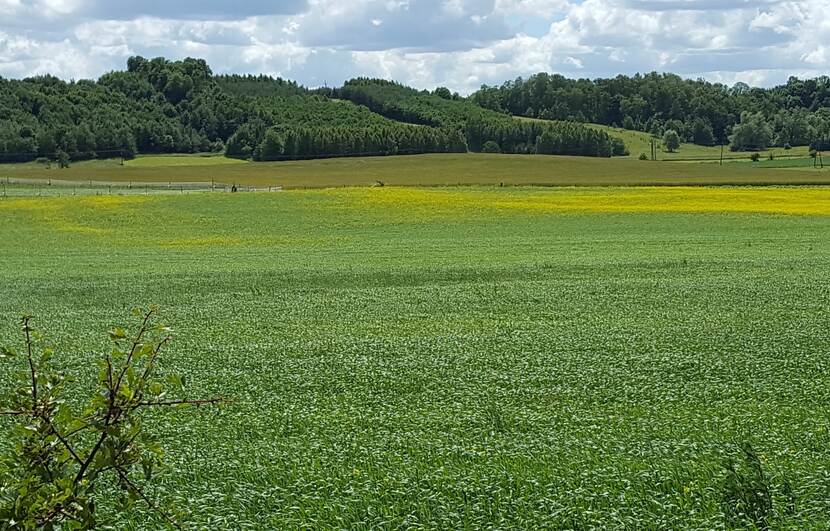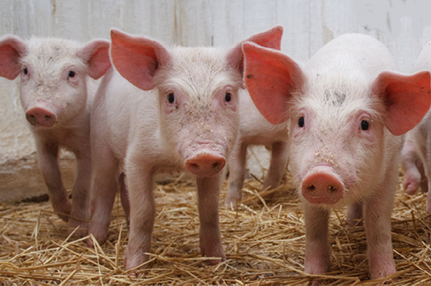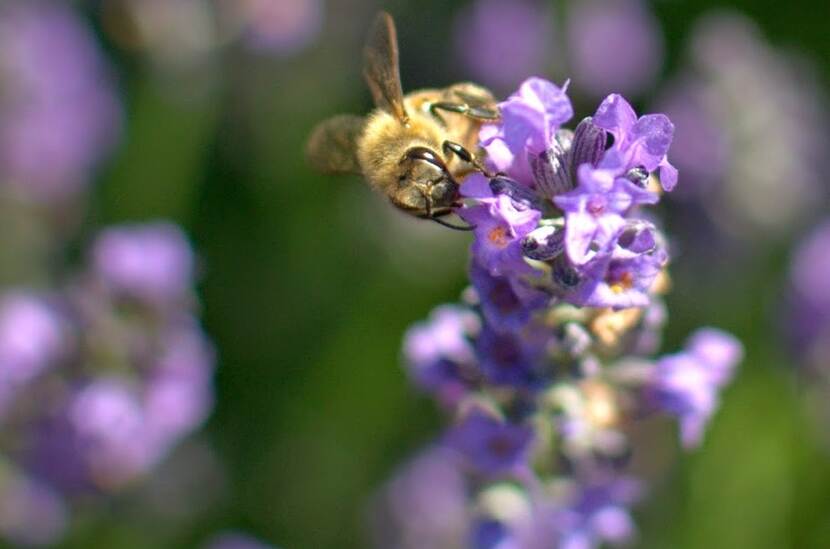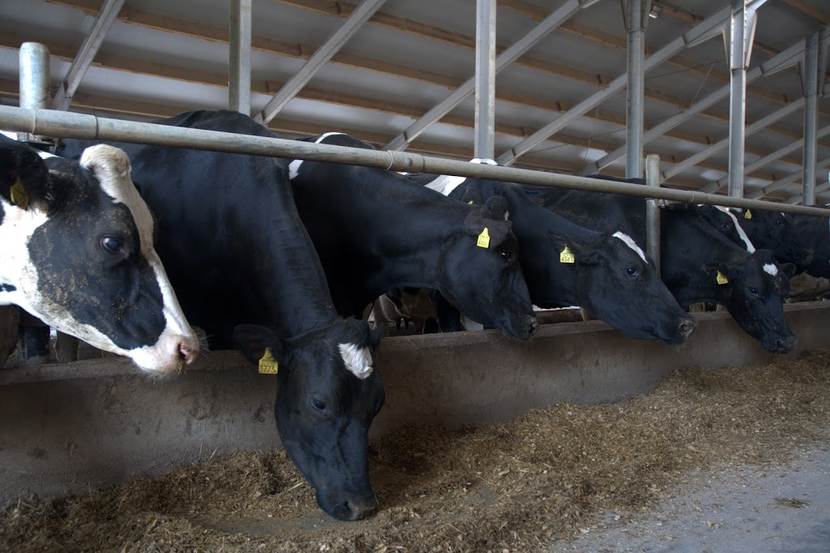Poland, brief agricultural news week 20, 2019
What happened in Poland last week? A brief overview of agricultural news.

Changes in the Land Act hampered growth of prices of agricultural land and reduced income from land lease
On May 1, 2016, a 12-year- moratorium in Poland on selling the agricultural land to foreigners ended. With the expiry of this period and upcoming opening of the market for buying and selling of agricultural land, a new land law was issued by the Polish government. The Surpreme Audit Office in Poland audited this Act and stated that these changes have hampered the growth rate of agricultural land prices and have resulted in a reduction of sales transactions and a reduction of rent for the State Treasury Agricultural Property Reserve from leased agricultural land. Recently, the Polish senate approved amendment on the Act on the trade of agricultural land. The amendments focused on simplifications in buying and trading in both state and private agricultural land and might improve the situation. Since 1992, around 3 mln ha has been sold by the Polish government, currently 10% (1.4 mln ha) of agricultural land is still in the hands of State Treasury Agricultural Property Reserve. Out of this 10%, around 1 mln ha is leased. Most of the land was sold in the years following 1992, in 2016 only 17 000 ha has been sold, dropping to 3,500 ha (2017) and 2,500 ha in 2018. The press release with findings of the Surpreme Audit Office can be found here.
Source: NIK

Commercial Tax in Poland announced legal by the European Union Court
Commercial tax in Poland has finally been announced legal by the General Court of the European Union. In September 2016 doubts about the legality of provisions were reported by the European Commission , which resulted in the suspension of the tax. According to the European Commission, the construction of the tax indicated that it could be a way of public aid. On Thursday, May 16, the General Court of the European Union considered the EC accusations to be unfounded. Therefore, Poland will be able to restore the tax and apply additional fees to retail chains from January 1, 2020. However, the judgment is not legally valid, so the EC may appeal against it.
The Act on the tax on retail sales, called the commercial tax, which PiS passed in 2016, provided for the introduction of two tax rates for retail sales: the first of them, for companies with monthly turnover between 17 and 170 million PLN, which is to be 0.8% and the second was to include trading enterprises with monthly turnover above PLN 170 million. Such companies were to pay a tax of 1.4%. The tax-free amount was set at PLN 204 million a year. The finance ministry assumed that the introduction of a new tax would increase revenues to the state budget by PLN 1.5 billion a year. The money was supposed to come mainly from foreign companies that own large networks of super- and hypermarkets.
Source: Wprost

Already over 1 000 cases of ASF in Poland this year
Beginning of May, Poland exceeded the amount of 1 000 detected cases of African Swine Fever (ASF) in 2019. Since the beginning of 2019, 1 021 case of ASF have been confirmed in Poland. The situation is slightly better than it was in the corresponding period of the previous year. At that time, nearly 1,200 cases of ASF he been confirmed in Poland. Most cases in 2019 have been found in the following provinces: Mazowieckie, Lubelskie, Warmisko-Mazurskie and Podlaskie. Most of the cases refer to the Mazowieckie province. The disease also appeared now in Warsaw itself. Source Farmer, General Veterinary Inspectorate

Season for first communion and weddings has started
May is traditionally associated with first communions in Poland. For this reason the demand for white, ecru and other light and ‘pure colors’ flowers is growing in this period of the year in Poland.
Etheric flowers like forget-me-nots, daisies, sapphires, lilies of the valley are the most popular in the Polish ornamental sector as thy are used for wreaths and bouqets for girls and for the decoration of churches. Also gypsophila is undergoing a popularity renaissance in Poland.
Additionally green leaves like hosta or asparagus becoming again popular in Poland and are more often used as the main decoration of the church for weddings.
Traditionally not many weddings were organized in Poland in May due to an old superstition that one can marry only in the month with a vibrant consonant ‘r’ in it. Therefore months like June (czerwiec), August (sierpień), October (październik) and December (grudzień) are the most occupied for weddings in Poland. But also this is changing and many white flowers that were associated with communion are now used for wedding decorations.
Source: Bronisze, PAP

Safe and natural vaccine against nosemosis by bees
Extinction of bees is a global trend. One of the factors that have an impact on it are huge monoculture fields, with one crop produced for many years at the same spot. The lack of diverse vitamins and minerals that bees take from diverse plants and flowers is one of the causes of nosemosis disease.
The scientists from the Polish Maria Skłodowska-Curie University in Lublin discovered a new combination of extracts, that applied to bees increase their resistance that helps to fight nosemosis (well known nosemosis apis but also the Asiatic nosemosis ceranae).
The vaccine is completely safe for human beans. Based only on natural ingredients it was created from adaptogenic plants that increase resistance by vertebrate. Apparently the extract has a positive influence on bees as well. The vaccine is now commercialized and the content submitted for patent.
Source: Puls biznesu

Animal Breeding Exhibition in Poznań
The National Exhibition of Animal Breeding is a three-day show, which brings together the best Polish breeders presenting their animals as well as producers and distributors presenting the latest technology and solutions used in agriculture and animal husbandry. This year, during the National Exhibition of Animal Breeding we will be witnessing the largest in the history of the Exhibition of Native Breeds. Among the native breeds there will appear, among others: Polish Red or Białogrzbieta cattle, Wrzosówka sheep, Merino Polish in old type, Black-headed chickens, chickens bearing - green-legged partridge or sussex, geese - Lublin, Kielce, Podkarpackie, Pomeranian, Kartueck, Garbonosa or rypińska, as well as rabbits and chinchillas. The biggest ever exhibition of Shetland ponies is also promisingly interesting - the organizers have pointed out. The exhibition takes place at the International Poznań Fair. The exhibition will show, among others 180 cattle, 80 beef cattle, 160 sheep and goats, 500 rabbits, as well as 150 chinchillas.